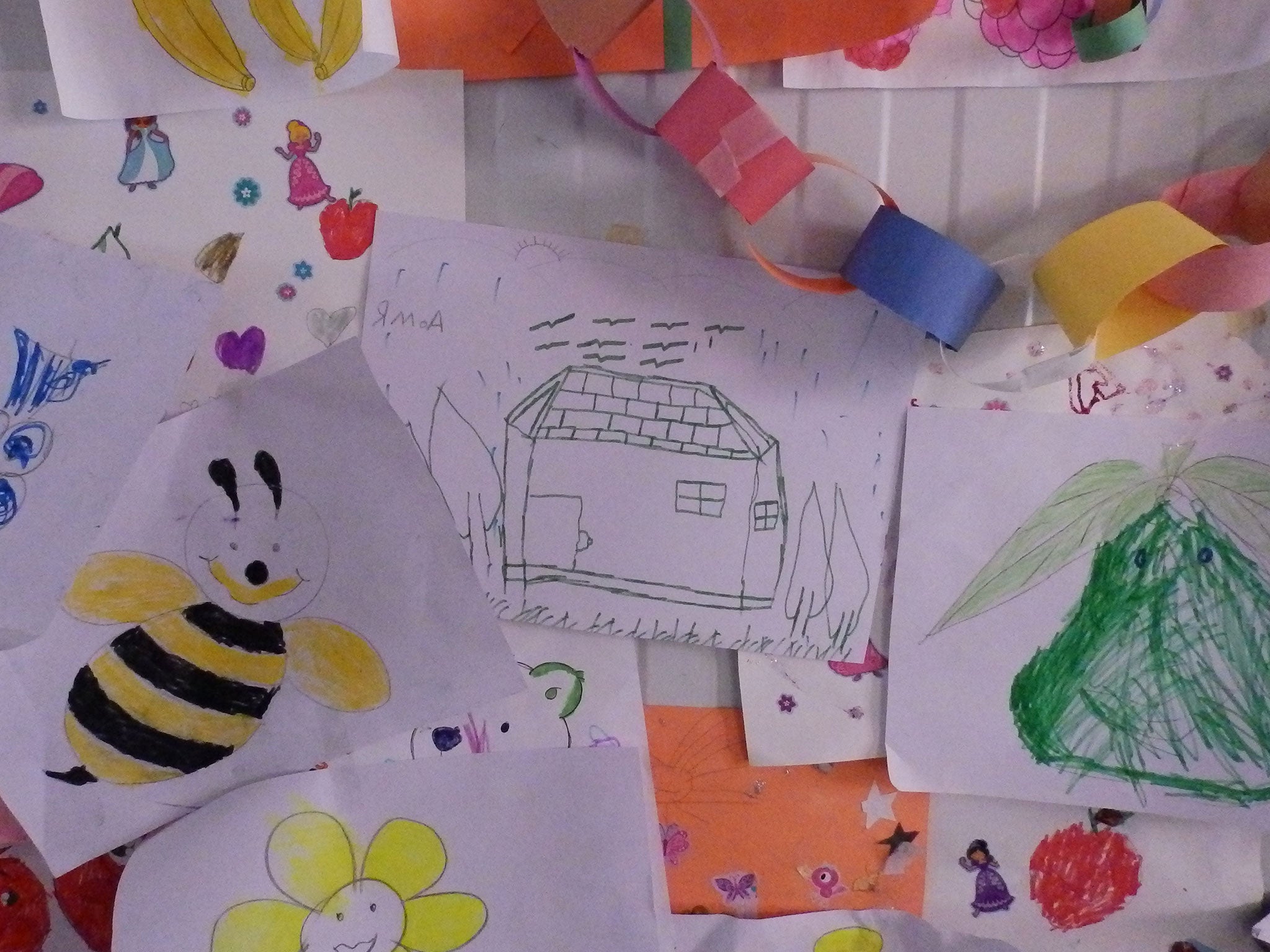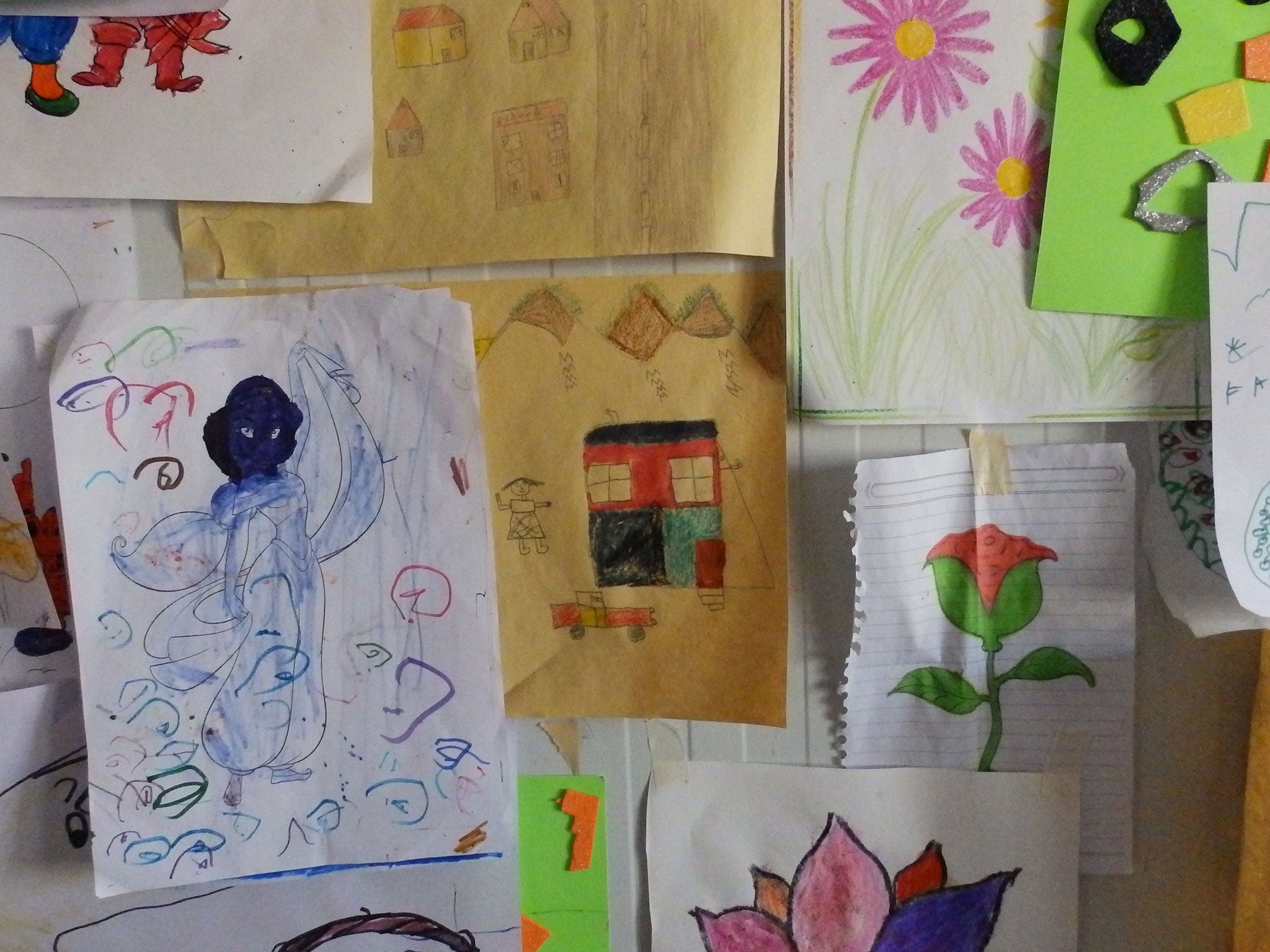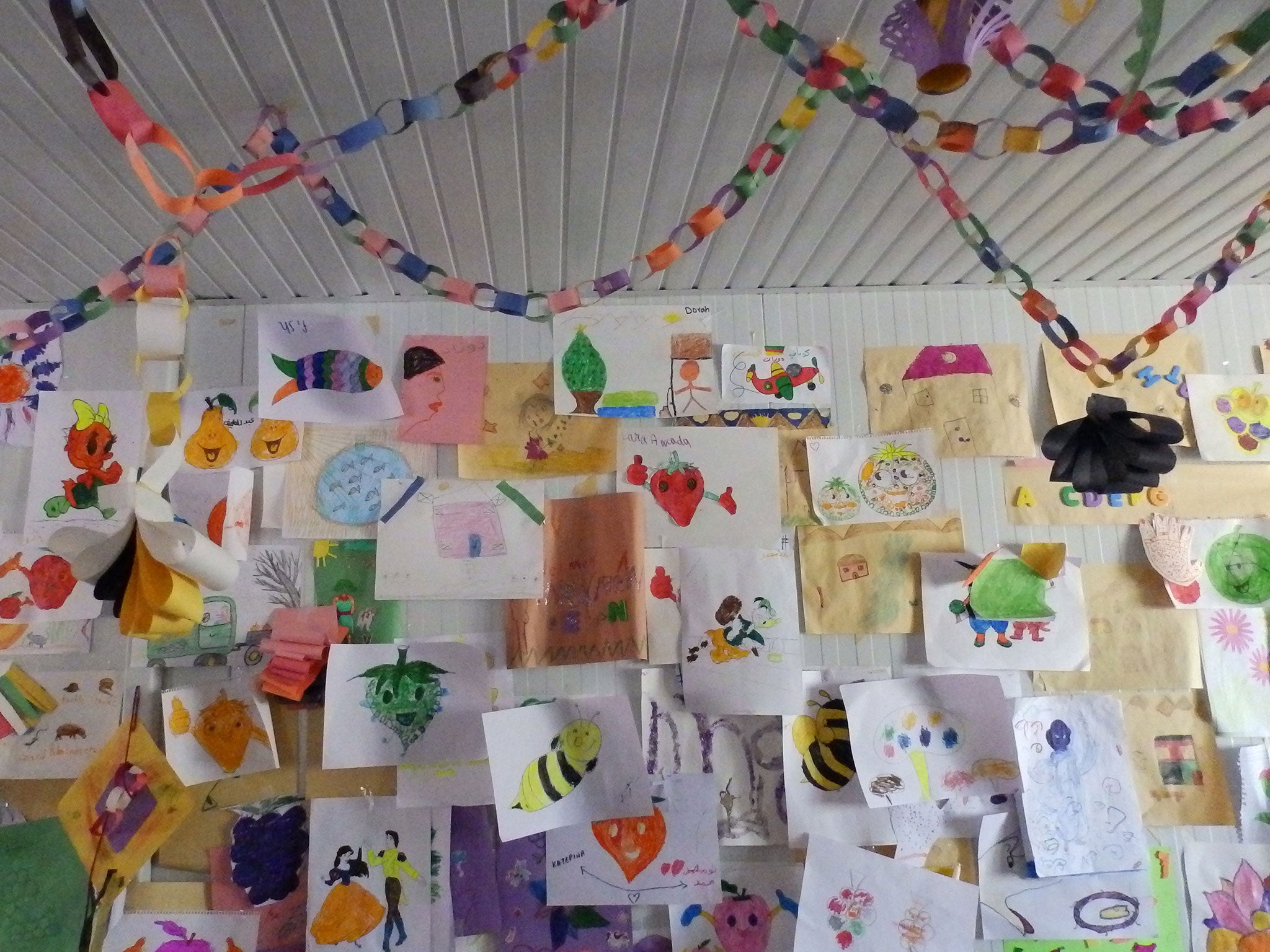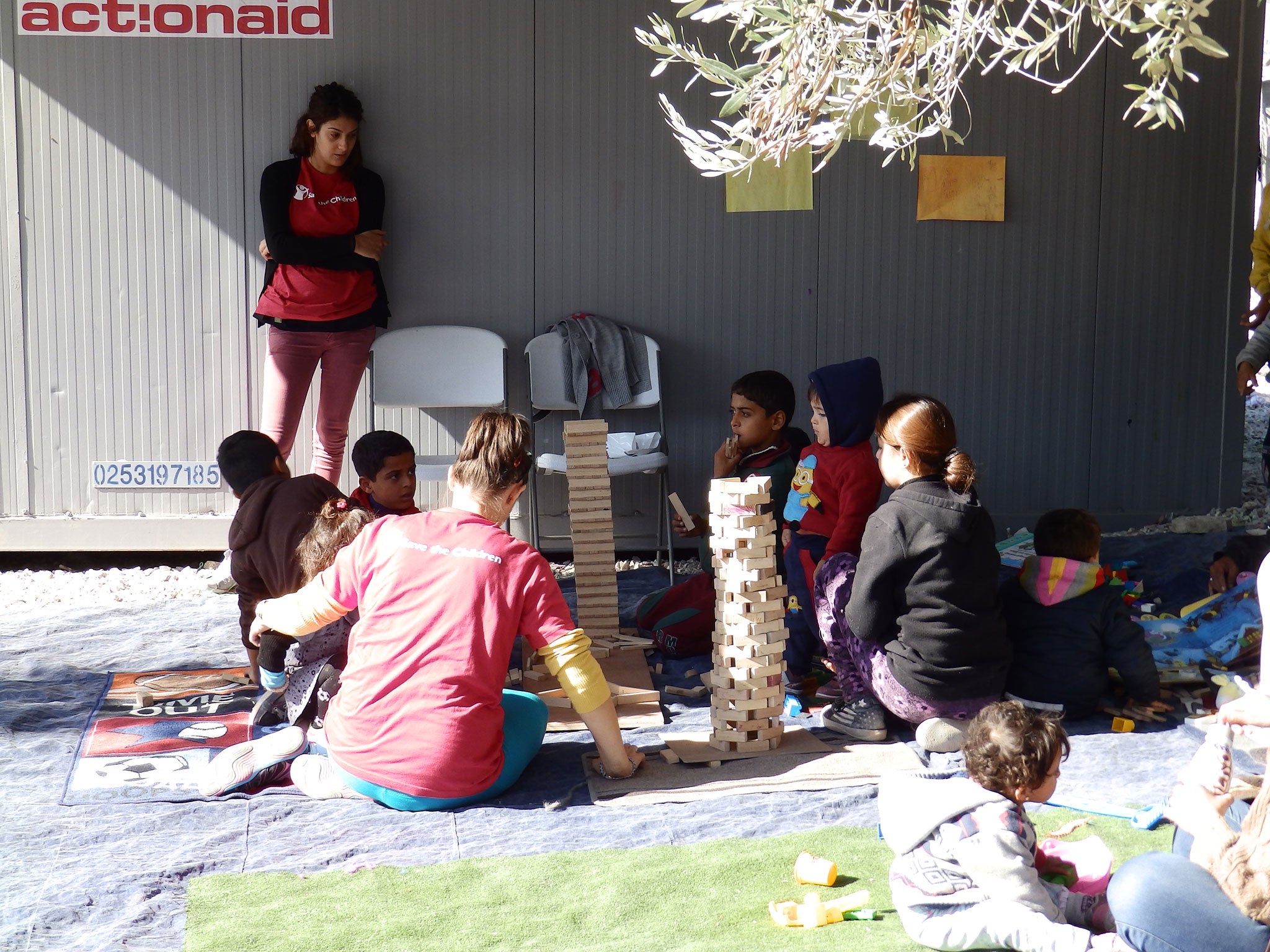Refugee crisis: Child refugees draw the houses they hope to have in camp on the Greek island of Lesbos
Save the Children runs 'child-friendly spaces' where the youngest refugees can play

Your support helps us to tell the story
From reproductive rights to climate change to Big Tech, The Independent is on the ground when the story is developing. Whether it's investigating the financials of Elon Musk's pro-Trump PAC or producing our latest documentary, 'The A Word', which shines a light on the American women fighting for reproductive rights, we know how important it is to parse out the facts from the messaging.
At such a critical moment in US history, we need reporters on the ground. Your donation allows us to keep sending journalists to speak to both sides of the story.
The Independent is trusted by Americans across the entire political spectrum. And unlike many other quality news outlets, we choose not to lock Americans out of our reporting and analysis with paywalls. We believe quality journalism should be available to everyone, paid for by those who can afford it.
Your support makes all the difference.In a corner of a refugee camp on the Greek island of Lesbos, children sit drawing the homes they hope one day to have.
The walls of the temporary shelter they sit in are papered with colourful pictures, showing houses of all shapes and sizes sitting in neat gardens or with mountainous backdrops, dotted between images of food, animals and cartoon characters.
At first glance, the room looks like any school classroom but a closer look reveals clues to the horrors the children have fled.

The colours of the Kurdish flag of Rojava appear time and time again, and one poster displays it above the world “Kobani” – the autonomous Syrian region overrun by Isis earlier this year.
Staff working at Save the Children’s child-friendly space told The Independent houses are a common theme for the children, who come to the centre to play as their families wait to be registered by Greek authorities so they can move on.
Sophia Kouloritis, a local volunteer at the centre in Kara Tepe refugee camp, said it offers the children brief respite between their traumatic journey across the Aegean Sea and continuing travels through mainland Europe.
“We try to help the kids to have fun and play, and forget what happened and why there are here,” she added.
“I'm a mum and I have a kid so I want to help them. I come to help them start a new life with happiness.”

Mrs Kouloritis lives on Lesbos and said most of her fellow volunteers were also Greek.
“Some of them here are angry with all these things happening but most of them want to help,” she said. “Everywhere they see refugees and are worrying about the refugees want to help them.”
As we spoke, a young Syrian boy asked us to join in with a makeshift basketball game using a tennis ball and bucket, while toddlers played with toy cars and building blocks on the ground and older children had a game of football.
The happy scenes were a contrast from the rest of the camp, where children and toddlers were scrambling over piles of rubble and playing with only rocks, piling them into empty crisp packets and emptying them out again.
Of almost 900,000 refugees and migrants who have arrived in Europe so far this year, the vast majority have entered through Greece, including 425,000 landing in Lesbos alone.

The vast numbers are finally showing signs of falling on the holiday island, from an average of 4,400 a day last month to between 1,000 and 3,000 daily over the past week.
Many of the children arriving have suffered untold trauma and hardship at home in Syria and the Middle East, as well as at the hands of smugglers on the way through Turkey and across the Aegean to Greece.
Kate O'Sullivan, who works with Save the Children at the Kara Tepe refugee camp, recalled one young Syrian boy who had survived a mortar attack on a busy market.
The 13-year-old had been was shopping with his aunt when the explosion hit, she said. The boy survived with shrapnel wounds but all he could find of his aunt were her severed hands.
“I know the parents are taking huge risks but they're doing it for their families,” Ms O'Sullivan said.
“It's not a choice for them to flee warzones and come here - it's a choice how we respond.
“Every last child who died didn't have to die and every last child who will die over this winter didn't have to die either.”
Marleen Altes, Save the Children’s child protection advisor for Greece, said many children arriving have survived shipwrecks or lost their parents, siblings or friends on the treacherous voyage from Turkey.
Those who seem withdrawn, behave erratically or show other signs of post-traumatic stress disorder are given psychological help.
“They're exposed to exploitation and smugglers and other risks, and still in all these transit countries reception centres and basic facilities are very limited,” Ms Altes added.
“These families leave everything behind and don't know what the future is going to bring. And it's going to get much worse through the winter.”
Join our commenting forum
Join thought-provoking conversations, follow other Independent readers and see their replies
Comments